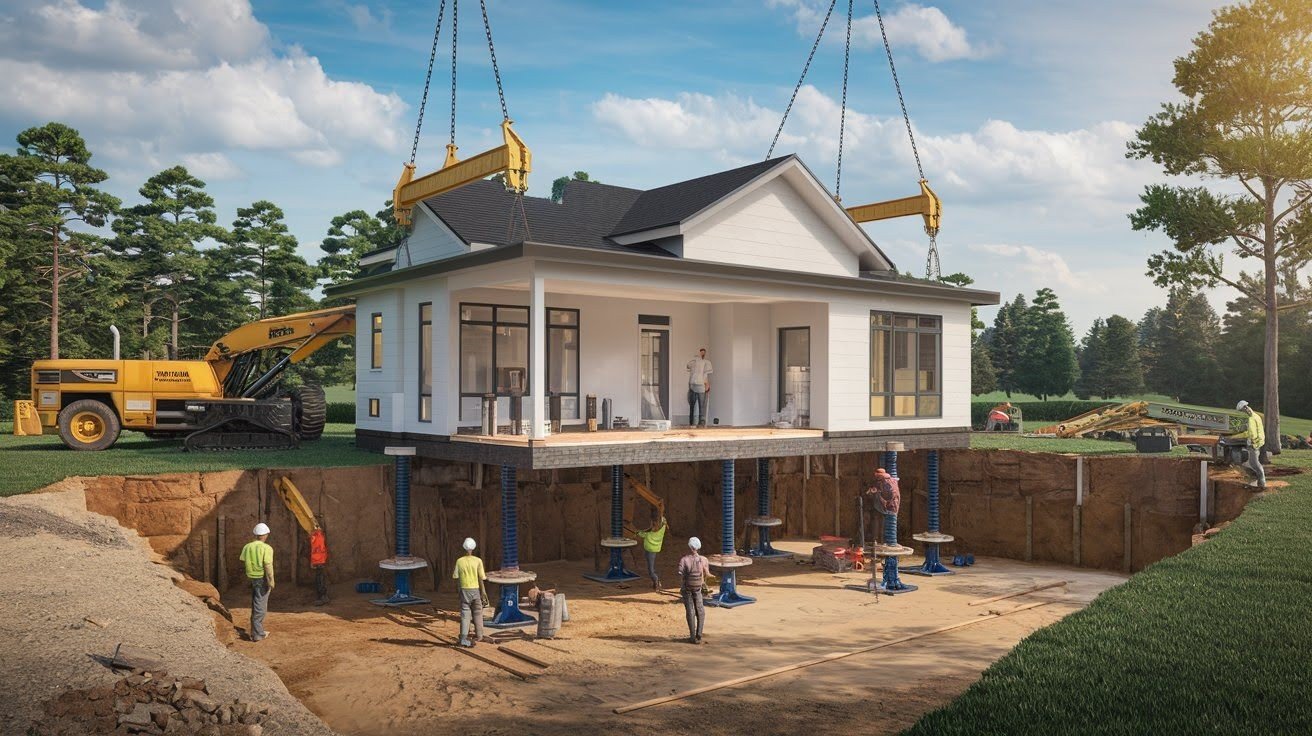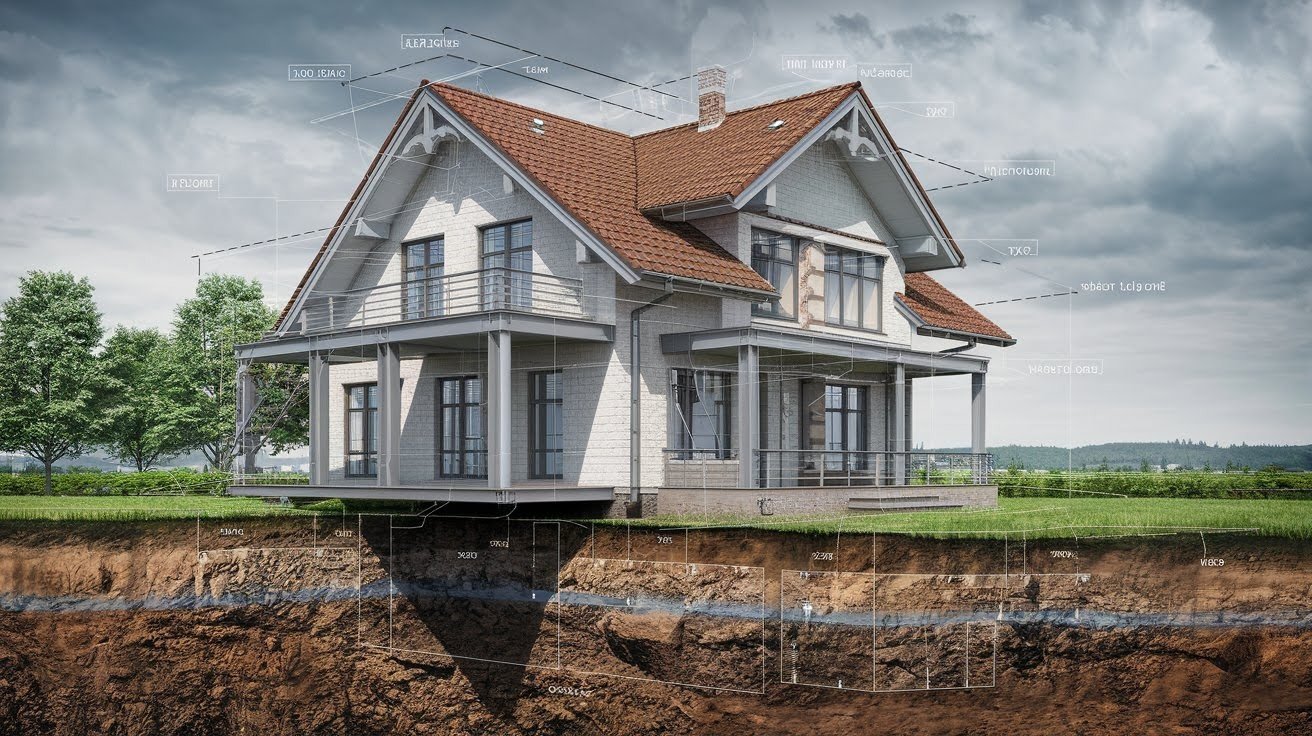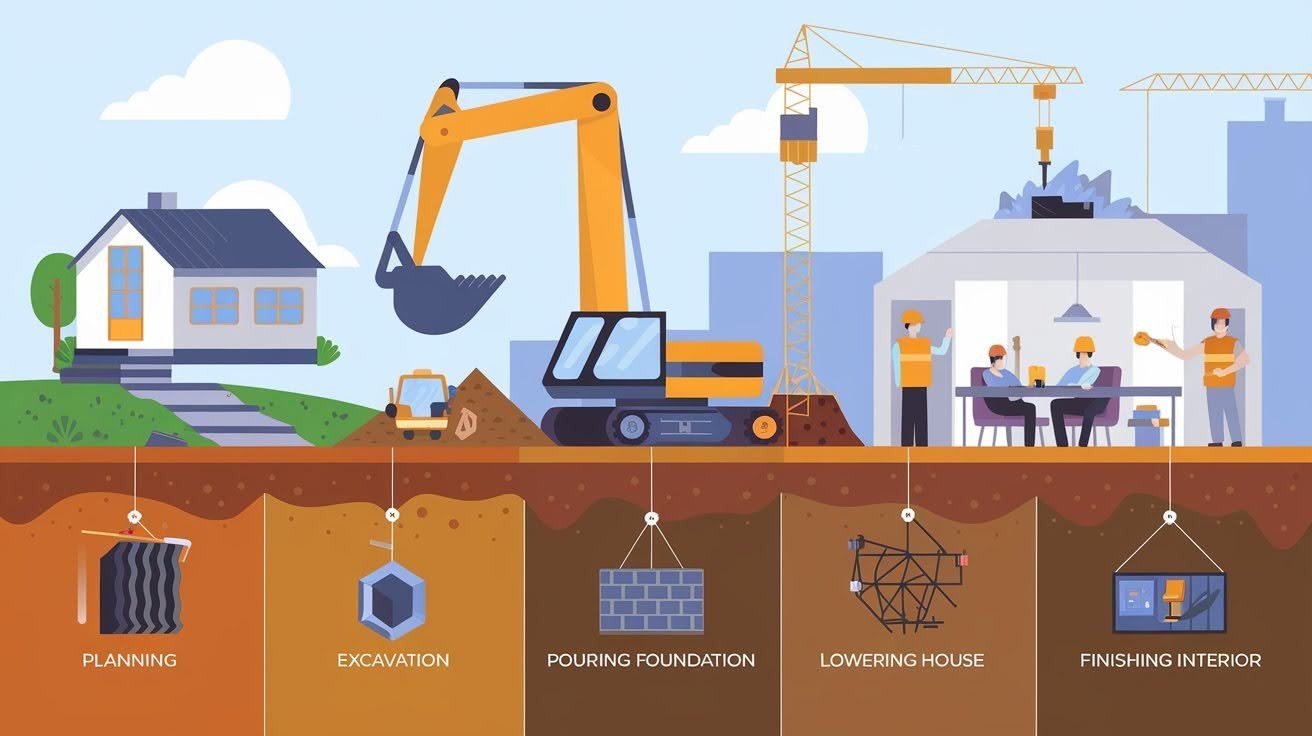Running out of space in your home? Looking down instead of up might be your answer. Can you add a basement to a house? This question keeps many homeowners awake at night.
You’re not alone in wondering about this option. I’ll give you the complete answer in this guide. You’ll learn if basement addition is possible for your home. Plus the real costs involved.
Here’s what you’ll learn:
- Can your house support a basement addition
- Step-by-step process from start to finish
- Actual costs with no hidden surprises
- Legal requirements you must follow
- Real case studies from homeowners like you
I’ve helped dozens of families make this decision. Some chose basement additions. Others picked better alternatives.
My goal is simple: Help you make the right choice for your family and budget.
By the end of this article, you’ll know if adding a basement makes sense. Or if you should explore other options instead.
Let’s dig into the details.
Is It Possible to Add a Basement to an Existing House?

Yes, you can add a basement to most existing homes.
But here’s the catch, it’s one of the most complex home renovations you can undertake. I’m talking about lifting your entire house, digging underneath it, and building new foundation walls.
Not every house is a good candidate. Your home’s foundation type matters. Slab-on-grade foundations make basement additions nearly impossible. Crawl spaces and existing basements are easier to work with.
The soil conditions under your house play a huge role too. Rocky soil costs more to excavate. Clay soil can shift and cause problems. Your local building codes will have the final say.
Some areas don’t allow basement additions at all. Others have strict requirements about depth, drainage, and emergency exits.
Reasons People Add a Basement to a House

Why would anyone choose such a challenging project?
More living space is the top reason. Basements can become family rooms, home offices, or guest suites. Storage needs drive many basement projects. You get tons of space for seasonal items, tools, and belongings.
Home value often increases with a finished basement. But the return on investment varies by location. Growing families need more room. Going down is sometimes easier than moving to a bigger house.
Home businesses benefit from separate workspaces. A basement office keeps work life separate from family life.
But here’s what most people don’t consider:
Climate control costs will increase. Heating and cooling underground space takes energy.
Moisture issues are common in basements. You’ll need proper waterproofing and ventilation.
Structural and Engineering Considerations

This is where things get serious.
Your house structure must support the lifting process. Old homes with weak framing might not handle being raised. Foundation walls need to be built correctly. They’ll support your entire house plus the new basement.
Soil bearing capacity determines how deep you can go. Some soils can’t support the weight of a house and basement. Water table levels affect your options. If groundwater sits high, you’ll face ongoing moisture problems.
Drainage systems are critical. Without proper drainage, your basement will flood. You’ll need professional help here. A structural engineer must evaluate your home. They’ll create plans that meet local building codes.
Don’t skip this step. DIY basement additions can lead to catastrophic structural failure.
Step-by-Step Overview of the Basement Addition Process

Ready to see what you’re getting into?
Step 1: Planning and Permits
- Hire a structural engineer
- Get soil tests done
- Apply for building permits
- Create detailed construction plans
Step 2: Preparation
- Disconnect utilities
- Remove landscaping around the house
- Set up temporary living arrangements if needed
Step 3: House Lifting
- Install steel beams under your house
- Use hydraulic jacks to lift the structure
- Build temporary supports
Step 4: Excavation
- Dig out the basement area
- Install drainage systems
- Prepare the foundation base
Step 5: Foundation Work
- Pour concrete footings
- Build foundation walls
- Install waterproofing systems
Step 6: Lowering and Finishing
- Lower your house onto the new foundation
- Reconnect utilities
- Finish interior basement space
The entire process takes 3-6 months. Weather delays are common. Unexpected soil conditions can extend the timeline.
Costs: How Much Does It Cost to Add a Basement?
Here’s the number you’ve been waiting for:
|
Basement Type |
Cost Range |
|
Basic unfinished basement |
$50,000 – $150,000 |
|
Finished basement with amenities |
$100,000 – $300,000 |
|
Luxury basement with full kitchen and bathroom |
$200,000 – $500,000 |
But that’s just the starting point.
Main Cost Breakdown
|
Work Category |
Cost Range |
|
House lifting and structural work |
$30,000 – $80,000 |
|
Excavation and soil removal |
$15,000 – $40,000 |
|
Foundation and waterproofing |
$25,000 – $60,000 |
|
Utilities and electrical |
$10,000 – $25,000 |
|
Finishing materials |
$20,000 – $100,000 |
Hidden Costs to Consider
|
Additional Expense |
Cost Range |
|
Permit fees |
$2,000 – $10,000 |
|
Temporary housing |
$5,000 – $20,000 |
|
Landscaping restoration |
$3,000 – $15,000 |
|
Unexpected soil conditions |
$5,000 – $30,000 |
Most homeowners spend more than their original budget.
Plan for 20-30% cost overruns. Basement projects always have surprises.
Pros and Cons of Adding a Basement vs. Building Up or Out
Should you go down, up, or out?
Basement Addition
Good points: You keep your full yard space and get tons of storage. The space stays cool in summer and can double as a storm shelter. You add significant square footage without changing your home’s footprint.
Bad points: It’s the most expensive option with the longest construction time. You’ll deal with moisture issues and limited natural light. Most families need to move out temporarily during construction.
Building Up (Second Story)
Good points: You get plenty of natural light and easier construction access. It costs less than a basement and has no moisture concerns. The space feels more like regular living areas.
Bad points: Your existing foundation must be strong enough to support the weight. It completely changes how your home looks from the outside. You’ll need zoning approval in many areas and must add stairs.
Building Out (Addition)
Good points: This is the easiest and most cost-effective construction. You can add windows and doors easily with ground-level access. Weather affects construction less than other options.
Bad points: You lose yard space and might violate setback rules. It doesn’t add as much value as other options. Construction depends more on weather conditions.
The verdict?
Building out is usually the smartest choice. Building up comes second. Adding a basement should be your last option.
Legal and Zoning Considerations
Don’t start digging without checking these first:
Building permits are required in every city. No exceptions. Zoning laws might restrict basement additions. Some areas limit how deep you can go.
Setback requirements affect excavation. You might not be able to dig close to property lines. Flood zone regulations are strict. FEMA flood maps determine what’s allowed.
Egress requirements are safety mandates. Basements need proper exits for emergencies. Fire safety codes apply to basement living spaces. You’ll need smoke detectors and proper ventilation.
HOA rules might prohibit basement additions. Check your homeowner’s association guidelines. Utility easements can block your plans. You can’t build over certain utility lines.
Get everything in writing before you start. Verbal approvals don’t protect you.
Real-Life Examples and Case Studies
Let me share some real stories:
Case Study 1: The Thompson Family, Austin, Texas
The Thompsons had a 1,200 sq ft ranch home. Three kids meant they needed more space.
They added a 900 sq ft basement with:
- Family room
- Home office
- Storage area
- Half bathroom
Total cost: $185,000 Timeline: 5 months
Challenges they faced:
- Clay soil required special foundation work
- City required expensive drainage system
- Had to live in apartment for 2 months
Results: Home value increased by $120,000. They got back 65% of their investment.
Case Study 2: The Martinez Family, Denver, Colorado
The Martinez family bought a 1950s home with a small crawl space. They converted it to a full basement.
Project scope:
- Dug 4 feet deeper
- Added egress windows
- Created mother-in-law suite
- Included full kitchen and bathroom
Total cost: $275,000 Timeline: 7 months
Problems encountered:
- Hit underground spring
- Needed additional waterproofing
- Permit delays added 6 weeks
Outcome: Created rental income of $1,800/month. The project paid for itself in 12 years.
Case Study 3: The Wilson Project, Chicago, Illinois
The Wilsons attempted a DIY basement addition. Big mistake.
What went wrong:
- Inadequate house support during lifting
- Floor joists cracked
- Foundation walls weren’t waterproofed properly
- Basement flooded twice in first year
Final cost: $320,000 (including repairs) Timeline: 14 months
Lesson learned: Always hire licensed professionals for basement additions.
Should You Add a Basement to Your House?
Adding a basement is possible. But it’s expensive, complex, and risky.
Consider these alternatives first:
- Finish existing basement space
- Build an addition
- Add a second story
- Convert attic space
Only choose basement addition if:
- You’re staying in the home long-term
- You have a substantial budget
- Local codes allow it
- Your lot can’t accommodate other options
Ready to move forward?
Start with these steps:
- Get a structural engineer evaluation
- Research local building codes
- Obtain multiple contractor quotes
- Secure financing before starting
Remember: basement additions are permanent decisions with permanent consequences.
Make sure it’s the right choice for your family and your budget. Your dream basement might be worth the investment. Or it might be a costly mistake. The choice is yours.
Final Thoughts
You now have the complete answer to adding a basement to your house. The short answer is yes. The long answer is much more complicated. Most homeowners should explore other options first. Building out or up costs less money. These projects take less time too. They cause fewer headaches.
But basement additions work for some families. You need the right house, the right budget, and the right timeline. You also need realistic expectations about costs and challenges. The key is making an informed decision. Don’t rush into this major project. Talk to professionals first. Get multiple quotes. Check your local building codes.
Your home should work for your family. Adding a basement or choosing another solution should fit your needs and budget. The right choice is the one that makes your life better.
Frequently Asked Questions
How long does it take to add a basement to an existing house?
Most basement additions take 3-6 months to complete. Weather delays and unexpected soil conditions can extend this timeline significantly.
Can you add a basement to a house with a slab foundation?
Adding a basement to a slab foundation is extremely difficult and expensive. Most contractors recommend building up or out instead of digging under a concrete slab.
Do you need to move out during basement construction?
You’ll likely need temporary housing for 1-3 months during the lifting process. The house becomes unstable and utilities get disconnected during major construction phases.
Will adding a basement increase my home’s value?
A finished basement typically adds 50-70% of the project cost to your home’s value. The return on investment varies greatly by location and local market conditions.
What’s the biggest risk of adding a basement to my house?
Structural damage from improper house lifting is the most serious risk. Hiring unlicensed contractors or cutting corners on engineering can lead to catastrophic foundation failure


